From Flat to Fluffy: The Conservation of Rabbi Szold’s hat
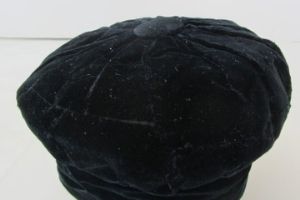
If you are too young to know about Breck shampoo—or if you just want to reminisce about 1970s hair products—check out this Youtube video.
A blog post by Senior Collections Manager Jobi Zink. To read more posts by Jobi click here.
Incorporating original objects from the JMM permanent collection in exhibitions—especially traveling exhibitions—is an important way to bring the focus to Jewish life in Maryland. This was particularly true with Passages through the Fire: Jews and the Civil War. Maryland was truly a boarder state during the Civil War and Jews were as divided as other groups when choosing sides. While I knew about his role on the pulpit in Baltimore, I was surprised to learn that Rabbi Benjamin Szold was asked to intercede on behalf of Private George Kuhn, a young Jewish Union deserter. Although Szold was unsuccessful, he remained with the young man until he was executed.
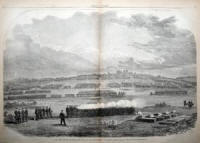
In addition to the trunk that Szold used when he emigrated from Breslau, the Museum also owns the black velvet hat he wore at about the time he was recruited by Temple Oheb Shalom in 1859. This artifact was perfect for the The Minhag America section of the exhibition, explaining the diverse practices in each Jewish community at the start of the Civil War.
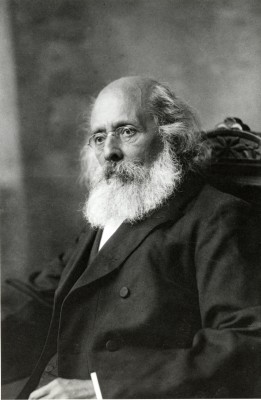
Unfortunately, the hat was in poor condition and could not be exhibited without conservation. As evidenced in the photo below, the velvet was completely split, and falling off the hat to expose a yellow/brown padding structure beneath, which too had tears, soiling, and damage. In addition to holes, the shape of the hat was distorted and crushed, and there was a considerable amount of dust accumulated across the surface!
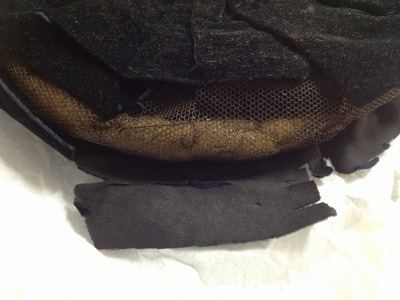
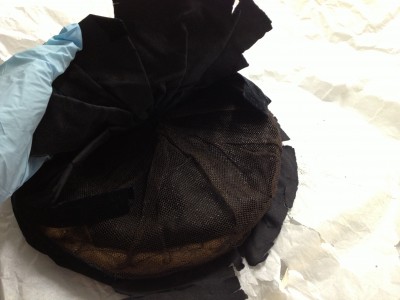
Conservation work can be time consuming and expensive—which is why the JMM only conserves select items, usually in conjunction with an exhibition. The American Institution of Conservation website was helpful in identifying specialized conservators by location. After we approved her treatment proposal, textile conservator Julia Brennan worked on Rabbi Szold’s hat. In her treatment report Julia explained the process of her work:
- The hat was humidified over several days in an enclosed chamber to slowly introduce moisture into the fabric. This made the hat more malleable, and throughout the humidification process it was gradually manipulated from its collapsed shape to its original shape. As the hat softened, it was gently filled out with tissue to hold the shape.
- The hat really took its original shape and the velvet is much more relaxed and supple.
- Large, split areas of the hat were lined with black cotton for stability. The split edges were then re-aligned and hand sewn to the black cotton with hand stitching, using a color-matched Skala thread. It was necessary to have the supports, as the velvet edges are too brittle to attach to each other.
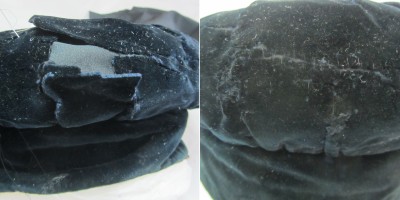
- In a large area where the velvet was missing entirely, a new piece of carefully matched black velvet was inserted and stitched into place with hand stitching. This fills the hole, and makes the hat more complete and attractive.

Our biggest concern with the Szold hat was whether it would be stable enough for exhibition after treatment. In addition to conserving the hat, Julia built a custom support to keep it in its original, stable shape. The support consists of four parts:
- A “donut” made of cotton stockinette and batting, exactly fitting the main body of the hat. This will prevent the velvet from the stress of collapsing, which contributed to the original splits.
- A small, dome shaped piece made of ethafoam and batting, covered in a non-abrasive black stretch fabric. This supports the center of the body of the hat, which the donut does not support.
- A flat disc made of ethafoam, batting, and black stretch fabric fit to the exact dimensions of the hat brim. This keeps the brim straight, preventing further wrinkling and making current wrinkling less obvious.
- A second, taller disc for the entire supported hat to sit on, also made of ethafoam, batting, and covered in a cream colored stretch fabric. This elevates the hat when its other support pieces are in place so the brim does not touch the resting surface. It can also be used for display purposes. Or not.
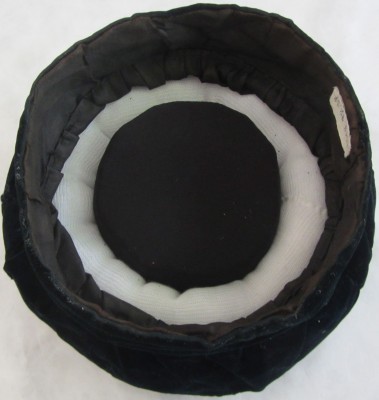
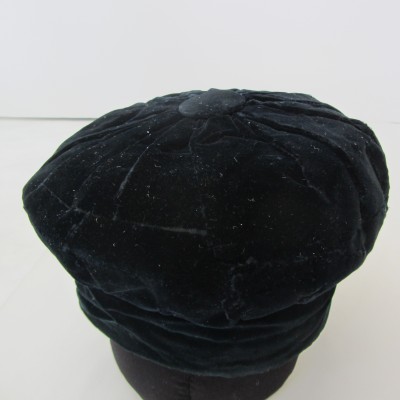
The hat has undergone a complete transformation! It is no longer limp and torn. It’s gone from Flat to Fluffy.
In the “Results and Recommendations” section of her report Julia cautions that the velvet is still extremely brittle, an irreversible problem. Some small splits remain in the velvet because the repair process is so stressful to the fabric that repairing them would cause more harm than good. The hat must be handled with extreme delicacy and caution, or more splits will occur, and current splits may get larger. The hat should be kept in a carefully monitored environment with low light. Cleaning should only be done by a conservation professional due to the delicacy of the fabric.
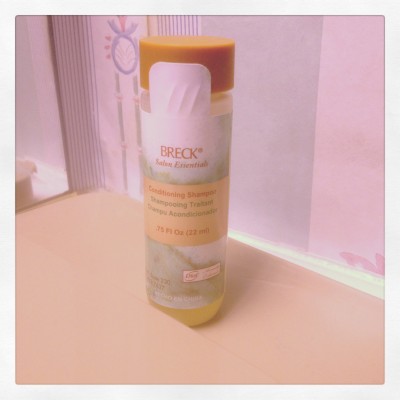
Rabbi Szold’s hat is on view in the Passages through the Fire exhibition on view now at the JMM. Funding for this important project was made possible by the Associated.
